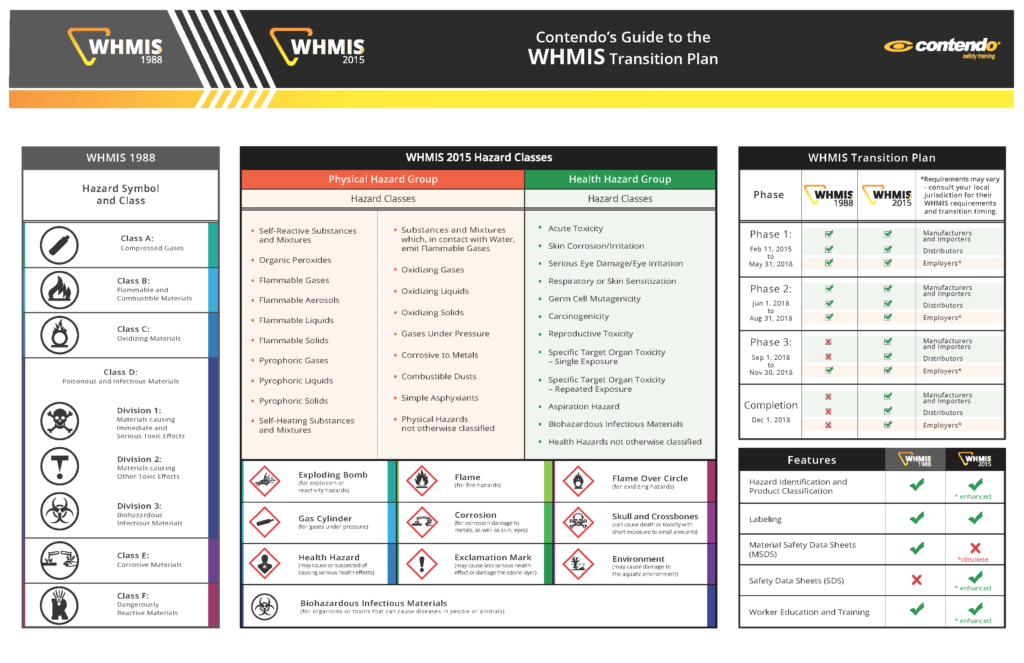
Kevin’s Blog / Have you ever used WHMIS?
Kevin’s Blog / SAGD short stories:
Have you ever used WHMIS?
“SAGD short stories” is a blog series about SAGD and process operations.
Have you ever used WHMIS?
Almost everyone needs WHMIS Training to work anywhere in Canadian industry. Schools and employers have been providing training in handling hazardous materials since 1988, and this is done at significant cost in both time and money. And almost everyone agrees this is worth the cost; with the possible exception of the worker who just got told it’s WHMIS re-training time again!
By far the most common complaint about WHMIS is “Why do I have to do this training again? Didn’t I just do this?”
I’ve felt the same thing myself. But let me ask you something – have you ever “used” WHMIS? I’m sure you’ve seen WHMIS labels and symbols on the containers you handle, but do you take the recommended precautions to safeguard yourself at work and at home? Have you looked up products you handle to see for yourself what you’re being exposed to?
Notice I just referenced “you” 9 times in that paragraph? Because WHMIS is about you! It’s not about the company you work for, it’s not about safety records, and it’s not about following procedures; it is entirely about educating you so you can avoid any known short term or long term harm from the products you handle.

Personally, I never really “used” WHMIS until I was assigned as an area operator in a chemical manufacturing plant. Until then I had never looked at a Material Safety Data Sheet (MSDS) other than at WHMIS training sessions. And to be honest, I only looked at my first one on-the-job a few days after a refresher session put it in my mind.
One of my new responsibilities was operating a chlorine dehydration unit using 97% sulphuric acid (H2SO4) to strip moisture from chlorine gas. I had been told the obvious hazards of the acid, it will burn if it touches skin or eyes, and the plant procedure requiring hard hat and chemical goggles in all process areas was supplemented by requiring a rain suit in the drying unit area. I felt as safe in there as I did in most other areas, so all was good.
On a night shift not long after my WHMIS refresher, I decided to open the WHMIS cabinet in the shop for the first time, and read the MSDS for sulphuric acid.
As I read it, I learned very little I didn’t know already…. until I got to the part saying that when inhaled in the form of a mist of very fine droplets, sulphuric acid is a carcinogen.
That’s a scary word.
No one involved with my training had ever discussed this, I think because the plant was already producing when WHMIS came into being and no one ever really used WHMIS due to an existing safety culture. Instead of being truly integrated into the plant safety process, WHMIS was treated as another required, stand-alone piece of training. And I don’t think this is uncommon.
Our Joint Health and Safety Committee reviewed procedures and determined no significant misting hazard existed as the acid was pumped in liquid form, and so no extra precautions were implemented.
For myself, I wore a full-face cartridge respirator in the drying unit from then on…. ever seen a pump seal leak? No time to worry about whether I’m looking at a “spray” or a “mist”!
So, have you ever “used” WHMIS? Make sure you do what you can to protect YOU!
Kevin Fox is a senior technical writer at Contendo.
He is a power engineer who has written process education programs for industrial clients since 2009.
To Learn More
At Contendo, we have been providing in-depth online operator training to the Oil Sands and SAGD industry for the better part of a decade; but we also have a suite of safety related products. If you want to learn more about WHMIS, stay tuned for more posts like this, or contact us to hear more about our Online WHMIS Training Course.
Was this article helpful? We’d love to keep in touch with you. Click here to sign up for our online newsletter.



